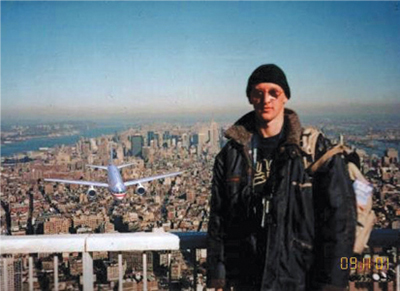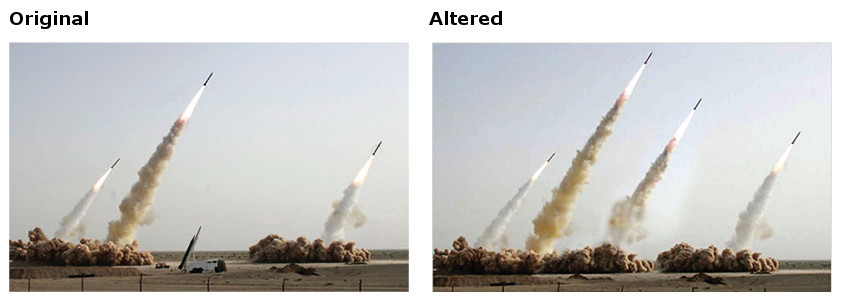The Ethics of Photo Manipulation
The use of photography became widespread by the mid-1800s, and at almost the same time, photographers realized that their images could be manipulated to influence their viewers, truth, and even history.


The altered portrait above, arguably the most famous image of President Abraham Lincoln, was created by putting Lincoln’s head onto the body of another politician, John C. Calhoun. After Lincoln’s death, many believed that there were not any truly heroic, presidential-looking, portraits of him, so this composite was created.This photo manipulation was done to honor a beloved president, but is it an ethical use of photo manipulation? Why or why not?


This famous example of photo manipulation dates from 1917. Two young girls in Cottingley, England, took a series of photographs that purported to capture fairies near their house. They later explained that they were just “photographs of figments of our imagination.” What do you think was the motivation behind creating these images, and do you believe that it was ethically wrong or just harmless fun?
Glenn Hill/SSPL/Getty Images
Page 519

The photo above demonstrates one dark side of photo manipulation: changing history. In the Soviet Union under Joseph Stalin, the Communist Party regularly manipulated historical photographs, removing people who had fallen out of favor with the dictator. One of the most famous examples is the pair here. In the photograph on the left, Leon Trotsky can be seen standing beside his close friend Vladimir Lenin, the first leader of the Soviet Union. Lenin’s successor, Stalin, saw Trotsky as a threat and had him removed from the photograph.
Clearly this alteration of history is unethical, but can you articulate precisely why?

Here is a much more borderline case. The original picture here was taken by John Filo at Kent State University on May 4, 1970, when National Guard soldiers fired into the crowd during a student protest, killing four people. It won Filo the Pulitzer Prize for Photography. Later, someone at Time magazine altered the photo to remove the unsightly post from the fence behind the woman’s head. The altered image ran for years in magazines and newspapers without indication that the picture had been altered.
What was changed in terms of the photo’s message by removing the post, if anything? Was this alteration ethical? Explain.
Page 520

In 1994, retired professional football star O. J. Simpson was arrested for the murder of his wife and her friend. From the beginning, the case touched on many elements of race because Simpson is black and his wife was white. The covers of both newsmagazines used the same mug shot from the day of his arrest, but the one on the right controversially altered the image, making Simpson’s skin appear darker.
Why do you think the image on the right caused so much controversy? To what extent were the editors of Time magazine acting unethically in presenting the image in the manner they did?


This uncredited photograph, with a time stamp of “09 11 01,” was reportedly found in a digital camera amid the rubble of the World Trade Center after the 9/11 attacks in New York City in 2001. It was shared and viewed extensively online before being discredited as a hoax.What was the possible intent behind this altered photograph? How is the audience cheated through this manipulation? How do the ethics of this photo manipulation compare with the ethics of the fairy hoax on page 518?
Page 521

The original photograph was taken in 2002 when President George W. Bush was visiting George Sanchez Charter School in Houston. An unknown person altered the second picture, flipping the book in Bush’s hands, and it was widely distributed online.
What statement might the unknown manipulator have been trying to make about President Bush? Why do you think this photograph was so widely distributed prior to its being discredited? How does this image relate to the photo manipulation practiced in the Soviet Union (described on p. 519)?

In July 2008, Iran announced it had successfully test-fired missiles. The image released by the Iranians, on the right, showed the launch of four missiles and was reprinted by many news organizations. It was later revealed to be Photoshopped; as you can see here, the original image shows only three missiles.
What are the political implications of this kind of photo manipulation? How does this manipulation reveal the difficulty of trusting photography?
Page 522

In 2007, country singer Faith Hill posed for Redbook, an American women’s magazine. The original picture is on the left, and the one on the right was enhanced for the cover.
Photo manipulation of model’s bodies, especially of women, is a typical practice for magazines and catalogs. Who is cheated in this kind of manipulation, and what effect, if any, do these kinds of images have on the viewers?
Page 523


Photographer Paul Hansen took this picture, Gaza Burial, which won the 2012 World Press Photo of the Year award. He was subsequently accused of photo manipulation and some thought that he should have been stripped of his award.
According to journalist Sebastian Anthony:
Basically, as far as we can surmise, Hansen took a series of photos—and then later, realizing that his most dramatically situated photo was too dark and shadowy, decided to splice a bunch of images together and apply a liberal amount of dodging (brightening) to the shadowy regions. For what it’s worth, Hansen claims that the light in the alley was natural—and to be fair, sometimes magical lighting does occur. I think most of you will agree, though, that the photo simply feels fake—there’s just something about the lighting that sets off a warning alarm in your brain.
Is enhancing an image to make a bigger impact ethical?



















